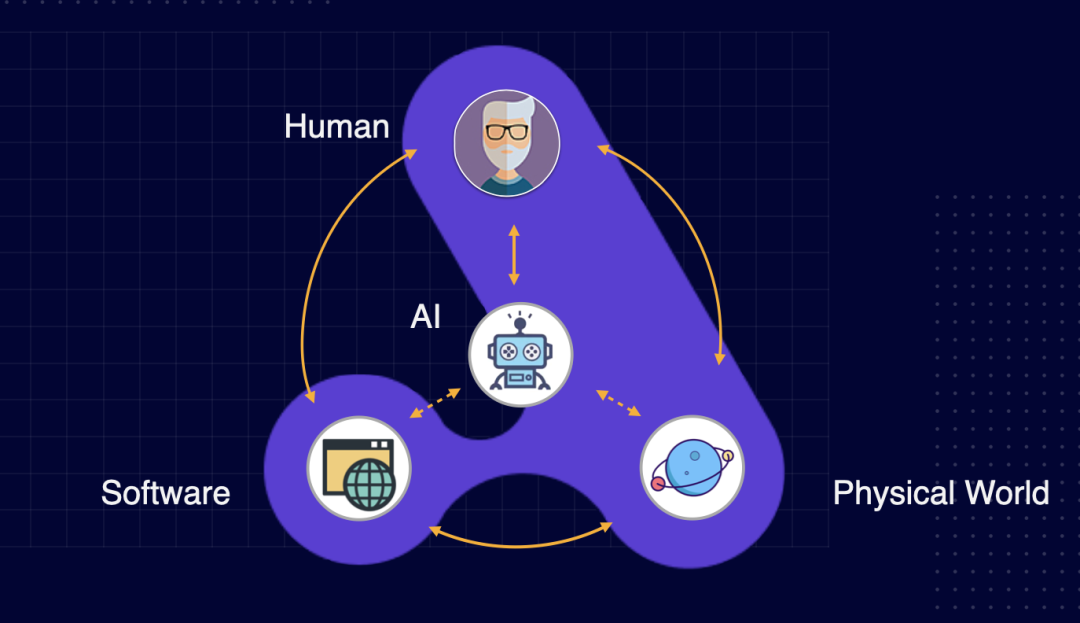Swagger 源码解析
Swagger 源码解析文章目录Swagger 源码解析前言Swagger2整合源码解析DocumentationPluginsBootstrapper 加载插件buildContextscanDocumentationSwagger2Controller总结执行步骤前言最近要改造公司的Swagger2,在改造前肯定要先了解下Swagger2的源码啦,通过Docket类定位并查看Swagger2的
Swagger 源码解析
文章目录
前言
最近要改造公司的Swagger2,在改造前肯定要先了解下Swagger2的源码啦,通过Docket类定位并查看Swagger2的源码包,大致了解了Swagger2是如何运作了,了解了原理,改造起来就得心应手了~
首先,还是先从整合开始讲解。
Swagger2整合
Swagger2的整合非常简单,3步搞定:
- 导maven包
<dependency>
<groupId>io.springfox</groupId>
<artifactId>springfox-swagger2</artifactId>
<version>2.9.2</version>
</dependency>
<dependency>
<groupId>io.springfox</groupId>
<artifactId>springfox-swagger-ui</artifactId>
<version>2.9.2</version>
</dependency>
- 配置Swagger2
SpringBoot中创建配置类
/**
* @program: lemon-wst
* @author: Mr.Lemon
* @create: 2020/7/11
**/
@Configuration
//@EnableSwaggerBootstrapUI
@EnableSwagger2
public class Swagger2Config {
@Bean
public Docket createRestApi() {
return new Docket(DocumentationType.SWAGGER_2)
.apiInfo(apiInfo())
.select()
.apis(RequestHandlerSelectors.basePackage("com.lemon.lemonwst.controller"))
.paths(PathSelectors.any())
.build();
}
private ApiInfo apiInfo() {
return new ApiInfoBuilder()
.title("测试 APIs")
.description("测试文档")
.termsOfServiceUrl("http://localhost:8001/")
.contact(new Contact("Mr.Lemon", "http://www.iamlucky.top/", "1330154682@qq.com"))
.version("1.0")
.build();
}
}
- 静态资源配置(现在版本的SpringBoot不需要了~)
最新版的SpringBoot版本中已经不需要配置也能成功了,但是还是记录下。
在 WebConfig 中配置静态资源服务。
/**
* @program: lemon-wst
* @author: Mr.Lemon
* @create: 2020/7/11
**/
@Configuration
public class WebConfig implements WebMvcConfigurer {
@Override
public void addResourceHandlers(ResourceHandlerRegistry registry) {
registry.addResourceHandler("swagger-ui.html").addResourceLocations("classpath:/META-INF/resources/");
registry.addResourceHandler("/webjars/**").addResourceLocations("classpath:/META-INF/resources/webjars/");
}
}
源码解析
DocumentationPluginsBootstrapper 加载插件
包中有个类叫 DocumentationPluginsBootstrapper ,其实现了Spring 的 SmartLifecycle 接口, 这个接口的作用是在Spring Bean都加载和初始化完毕时执行。
这里只放出类中的关键代码。
/**
* After an application context refresh, builds and executes all DocumentationConfigurer instances found in the
* application context.
*
* If no instances DocumentationConfigurer are found a default one is created and executed.
*/
@Component
public class DocumentationPluginsBootstrapper implements SmartLifecycle {
... ...
@Override
public void start() {
if (initialized.compareAndSet(false, true)) {
log.info("Context refreshed");
List<DocumentationPlugin> plugins = pluginOrdering()
.sortedCopy(documentationPluginsManager.documentationPlugins());
log.info("Found {} custom documentation plugin(s)", plugins.size());
for (DocumentationPlugin each : plugins) {
DocumentationType documentationType = each.getDocumentationType();
if (each.isEnabled()) {
scanDocumentation(buildContext(each));
} else {
log.info("Skipping initializing disabled plugin bean {} v{}",
documentationType.getName(), documentationType.getVersion());
}
}
}
}
... ...
}
在将几段关键代码单独拎出来早放一起(看文中代码注释):
// 这是我们一开始创建的 Docket 对象
@Bean
public Docket createRestApi() {
return new Docket(DocumentationType.SWAGGER_2)
.apiInfo(apiInfo())
.select()
.apis(RequestHandlerSelectors.basePackage("com.lemon.lemonwst.controller"))
.paths(PathSelectors.any())
.build();
}
// Docket 的实现如下,是springfox定义的一个Documentation插件
public class Docket implements DocumentationPlugin {
... ...
}
// Sping Bean初始化完毕后循环获取插件
for (DocumentationPlugin each : plugins) {
DocumentationType documentationType = each.getDocumentationType();
if (each.isEnabled()) {
scanDocumentation(buildContext(each));
} else {
log.info("Skipping initializing disabled plugin bean {} v{}",
documentationType.getName(), documentationType.getVersion());
}
}
在来看下DocumentationPluginsBootstrapper 他的构造函数:
@Autowired
public DocumentationPluginsBootstrapper(
DocumentationPluginsManager documentationPluginsManager,
List<RequestHandlerProvider> handlerProviders,
DocumentationCache scanned,
ApiDocumentationScanner resourceListing,
TypeResolver typeResolver,
Defaults defaults,
ServletContext servletContext,
Environment environment) {
this.documentationPluginsManager = documentationPluginsManager;
this.handlerProviders = handlerProviders;
this.scanned = scanned;
this.resourceListing = resourceListing;
this.environment = environment;
this.defaultConfiguration = new DefaultConfiguration(defaults, typeResolver, servletContext);
}
在初始化时将 List handlerProviders,通过构造器驻入,驻入了进来,记住这个变量,后面有用
buildContext
Spring Bean初始化完成后,将Controller的信息都存到了List handlerProviders 里去,这里的信息包括 Controller类、他上面的注解、类和方法的requestMapping、方法注解等,那么springfox 在拿到这个之后,就可以拿到我们平时在写代码时放的swagger注解,这样后面不用我说也知道,信息都有了剩下的就是解析数据的问题了。这里不再深入,可以看下 springfox.documentation.spring.web.plugins.DocumentationPluginsBootstrapper#buildContext 的源码。
发出关键代码:
private DocumentationContextBuilder defaultContextBuilder(DocumentationPlugin plugin) {
DocumentationType documentationType = plugin.getDocumentationType();
List<RequestHandler> requestHandlers = from(handlerProviders)
.transformAndConcat(handlers())
.toList();
List<AlternateTypeRule> rules = from(nullToEmptyList(typeConventions))
.transformAndConcat(toRules())
.toList();
return documentationPluginsManager
.createContextBuilder(documentationType, defaultConfiguration)
.rules(rules)
.requestHandlers(combiner().combine(requestHandlers));
}
这里总结起来就是把requestHandler的消息 解析到DocumentContext里
scanDocumentation
这块这是将 DocumentContext的消息放到 DocumentationCache 中去:
private final DocumentationCache scanned;
// 将 DocumentContext的消息放到 DocumentationCache 中去:
private void scanDocumentation(DocumentationContext context) {
try {
scanned.addDocumentation(resourceListing.scan(context));
} catch (Exception e) {
log.error(String.format("Unable to scan documentation context %s", context.getGroupName()), e);
}
}
public Documentation scan(DocumentationContext context) {
ApiListingReferenceScanResult result = apiListingReferenceScanner.scan(context);
ApiListingScanningContext listingContext = new ApiListingScanningContext(context,
result.getResourceGroupRequestMappings());
Multimap<String, ApiListing> apiListings = apiListingScanner.scan(listingContext);
Set<Tag> tags = toTags(apiListings);
tags.addAll(context.getTags());
DocumentationBuilder group = new DocumentationBuilder()
.name(context.getGroupName())
.apiListingsByResourceGroupName(apiListings)
.produces(context.getProduces())
.consumes(context.getConsumes())
.host(context.getHost())
.schemes(context.getProtocols())
.basePath(context.getPathProvider().getApplicationBasePath())
.extensions(context.getVendorExtentions())
.tags(tags);
Set<ApiListingReference> apiReferenceSet = newTreeSet(listingReferencePathComparator());
apiReferenceSet.addAll(apiListingReferences(apiListings, context));
ResourceListing resourceListing = new ResourceListingBuilder()
.apiVersion(context.getApiInfo().getVersion())
.apis(from(apiReferenceSet).toSortedList(context.getListingReferenceOrdering()))
.securitySchemes(context.getSecuritySchemes())
.info(context.getApiInfo())
.build();
group.resourceListing(resourceListing);
return group.build();
}
Swagger2Controller
最后在来看下 Swagger2Controller,这块就是 swagger 接口数据请求的 Controller,我们Spring中编写的Controller 的swagger信息都是通过这个接口打包成json传输给前端在进行渲染的: /v2/api-docs。整个信息获取的流程就是:
- 从DocumentationCache
- 解析数据,并组装成Swagger对象
- 序列化成json传到前端
关键代码整合:
@Controller
@ApiIgnore
public class Swagger2Controller {
public static final String DEFAULT_URL = "/v2/api-docs";
// json参数组装
@RequestMapping(
value = DEFAULT_URL,
method = RequestMethod.GET,
produces = { APPLICATION_JSON_VALUE, HAL_MEDIA_TYPE })
@PropertySourcedMapping(
value = "${springfox.documentation.swagger.v2.path}",
propertyKey = "springfox.documentation.swagger.v2.path")
@ResponseBody
public ResponseEntity<Json> getDocumentation(
@RequestParam(value = "group", required = false) String swaggerGroup,
HttpServletRequest servletRequest) {
String groupName = Optional.fromNullable(swaggerGroup).or(Docket.DEFAULT_GROUP_NAME);
// 获取我们前面花了大量篇幅说的 Documentation
Documentation documentation = documentationCache.documentationByGroup(groupName);
if (documentation == null) {
LOGGER.warn("Unable to find specification for group {}", groupName);
return new ResponseEntity<Json>(HttpStatus.NOT_FOUND);
}
// 解析转成Swagger类
Swagger swagger = mapper.mapDocumentation(documentation);
UriComponents uriComponents = componentsFrom(servletRequest, swagger.getBasePath());
swagger.basePath(Strings.isNullOrEmpty(uriComponents.getPath()) ? "/" : uriComponents.getPath());
if (isNullOrEmpty(swagger.getHost())) {
swagger.host(hostName(uriComponents));
}
// 序列化传到前端
return new ResponseEntity<Json>(jsonSerializer.toJson(swagger), HttpStatus.OK);
}
}
// 转成swagger类的方法
@Override
public Swagger mapDocumentation(Documentation from) {
if ( from == null ) {
return null;
}
Swagger swagger = new Swagger();
swagger.setVendorExtensions( vendorExtensionsMapper.mapExtensions( from.getVendorExtensions() ) );
swagger.setSchemes( mapSchemes( from.getSchemes() ) );
swagger.setPaths( mapApiListings( from.getApiListings() ) );
swagger.setHost( from.getHost() );
swagger.setDefinitions( modelMapper.modelsFromApiListings( from.getApiListings() ) );
swagger.setSecurityDefinitions( securityMapper.toSecuritySchemeDefinitions( from.getResourceListing() ) );
ApiInfo info = fromResourceListingInfo( from );
if ( info != null ) {
swagger.setInfo( mapApiInfo( info ) );
}
swagger.setBasePath( from.getBasePath() );
swagger.setTags( tagSetToTagList( from.getTags() ) );
List<String> list2 = from.getConsumes();
if ( list2 != null ) {
swagger.setConsumes( new ArrayList<String>( list2 ) );
}
else {
swagger.setConsumes( null );
}
List<String> list3 = from.getProduces();
if ( list3 != null ) {
swagger.setProduces( new ArrayList<String>( list3 ) );
}
else {
swagger.setProduces( null );
}
return swagger;
}
总结执行步骤

更多推荐
 已为社区贡献1条内容
已为社区贡献1条内容










所有评论(0)